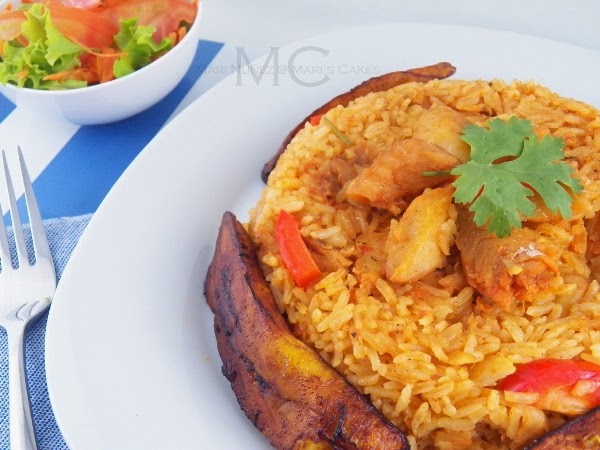I think I am right in saying that, just like the Dominican sancocho, chivo guisado is another favorite stew present in many special celebrations in the Dominican Republic. To prepare this northwestern dish, the chivo liniero is preferred by many for its taste and the quality of meat, but with this recipe it does not matter if the goat is from Monte Cristi or Higuey, I guarantee you will be able to cook a delicious chivo guisado. According to my husband I prepare "the best goat stew ever", and I believe him because 22 + years of marriage is not to be taken lightly, there is a reason why people say love enters through the kitchen, lol.
We buy this kind of meat in the main highway to Santiago like many others in the Cibao area. Goat meat vendors have their ambulatory stands located there, and this has become a popular area where you can get fresh goat meat by the pound or whole.
My goat stew has been a hit with my family members, who have all praised its taste and marveled at how the meat doesn't have the strong, distinctive smell and flavor usually associated with goat. One neighbor even shared a tip with me, suggesting that washing the meat with strong brewed coffee can help eliminate the goat-like taste and smell, a method that has worked for many people. However, I have my own technique that doesn't involve coffee. Instead, I thoroughly clean and wash the meat, as I will explain below, and then let it marinate overnight.
The recipe I use for this traditional dish is a combination of techniques I learned from my mom, who is known for making an incredible goat stew. While I've made some adjustments to better suit my husband's and my own tastes, the recipe is primarily based on the method my mom taught me.
Goat Stew, Chivo Guisado
If you're seeking a recipe for goat stew cooked with wine, or a guide on making spicy Dominican-style goat, you've come to the right place. This recipe is straightforward and easy to follow, making it ideal for first-time cooks who want to successfully prepare this dish.
4 ½ pounds of goat
Juice of 3 or 4 oranges sour
1 tablespoon onion powder
1 ½ tablespoon oregano
3, whole or ground malaguetas- all spice
2 tablespoons crushed garlic (6 cloves)
1 tablespoon soy sauce
½ teaspoon dried thyme
½ teaspoon salt
1-2 tsp ground black pepper
1 ½ cup red wine for cooking (divided use)
¼ cup olive oil
Pinch of sugar
1 onion
2 hot chili peppers (optional)
½ cup chopped cilantro
3 cup water
2 tablespoons tomato sauce
Instructions:
1. Wash the goat meat under running water and then add a ¼ cup of salt, until each piece is clean; Discard all the water. Squeeze the juice of an orange or two and rub each piece in it. Rinse again with water to remove all the salt and let the meat drain completely.
2. In a container with a lid, mix the goat meat with ½ cup orange juice, onion powder, oregano, allspice, crushed garlic, soy sauce (Chinese), thyme, salt, black pepper, and half of the wine for cooking. With a spoon or your hands stir the meat until well blended with the seasoning. If you already have prepared Dominican seasoning then use a cup of this seasoning and add the remaining spices/ ingredients like thyme, onion powder, soy sauce, allspice, orange juice, and wine. Cover the container and refrigerate overnight to allow the meat to absorb the flavoring and aroma of the herbs and spices. It can be cooked the same day, but for the best flavor, I recommend leaving it until the next day, you will not regret it.
3. When the meat is ready to cook, heat a large pot and add the oil, as soon as the oil begins to heat up, sprinkle a pinch of sugar over it. As the sugar begins to lightly brown, add the meat, and stir fry until nicely browned, Reserving the seasoning liquid for later. Add the brunoise onion and pepper, whole spicy pepper (optional), chopped cilantro, the reserve seasoned liquid, and two cups of water. Cover and leave on medium heat for an hour and a half or until meat is tender. Check constantly to see if more water needs to be added.
4. About 20 minutes before removing from the fire, add the remaining wine, 2 Tablespoons tomato paste, or chopped tomatoes, and check for salt and black pepper. Try to leave with plenty of sauce. Serve with white rice, boiled yuca or plantains, and or fried green plantains. Enjoy a delectable goat stew with an authentic Dominican taste!
Notes:
a) The bitter oranges can be substituted for lemons, but I find the orange give this dish a better and more authentic taste.
b) For a spicy goat stew add one to two chili peppers. Use with moderation because sometimes these peppers can be very spicy. Try not to make the stew too spicy to allow everyone in the family enjoy it. If you want a more subtle spicy, omit the chili peppers and add a little extra black pepper if you think it is needed after having verified in step four.
In the same way, the women are to be worthy of respect, not malicious talkers but temperate and trustworthy in everything. ~ 1 Timothy 3:11.
Post by Mari's Cakes.



























































Keep in touch